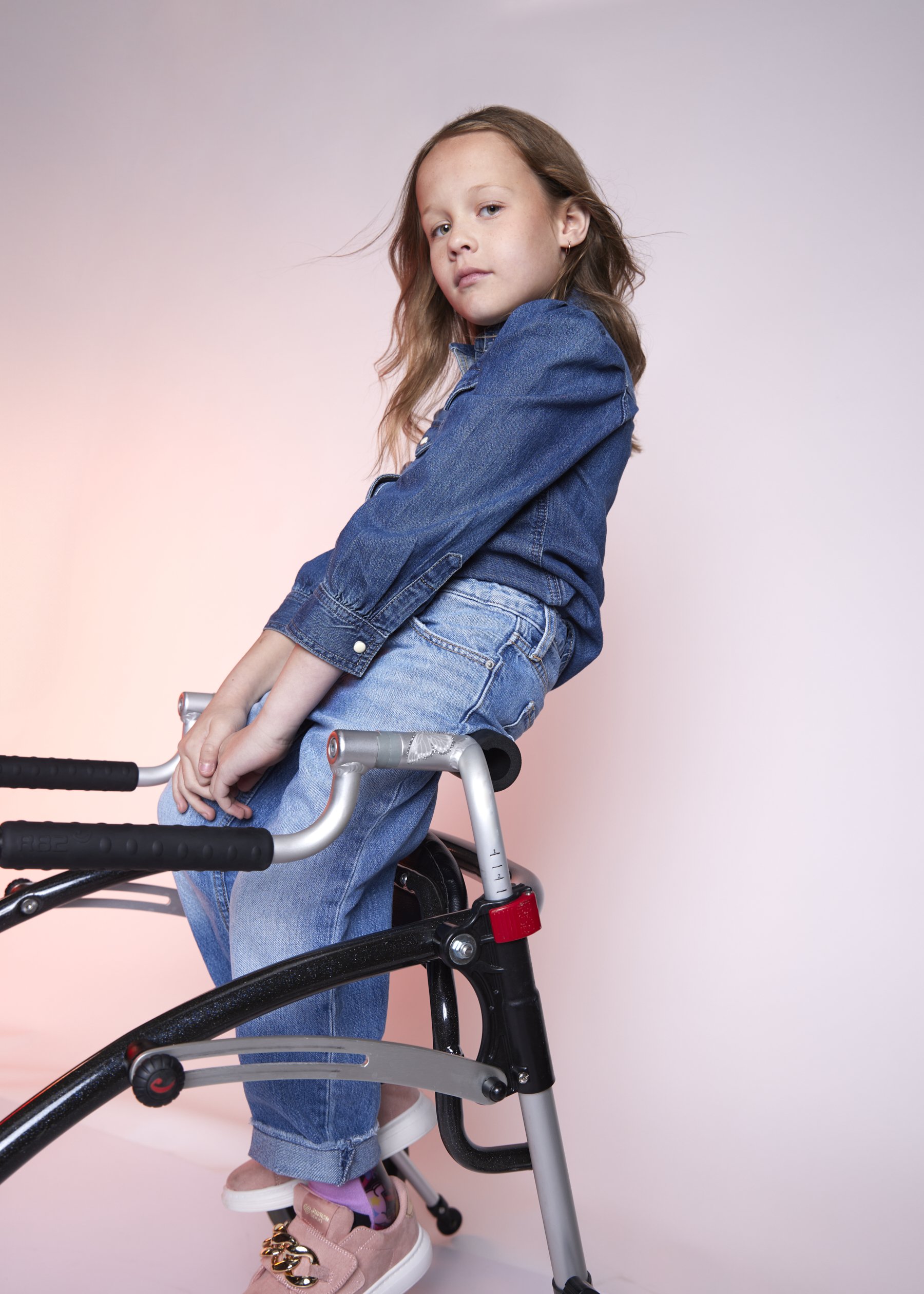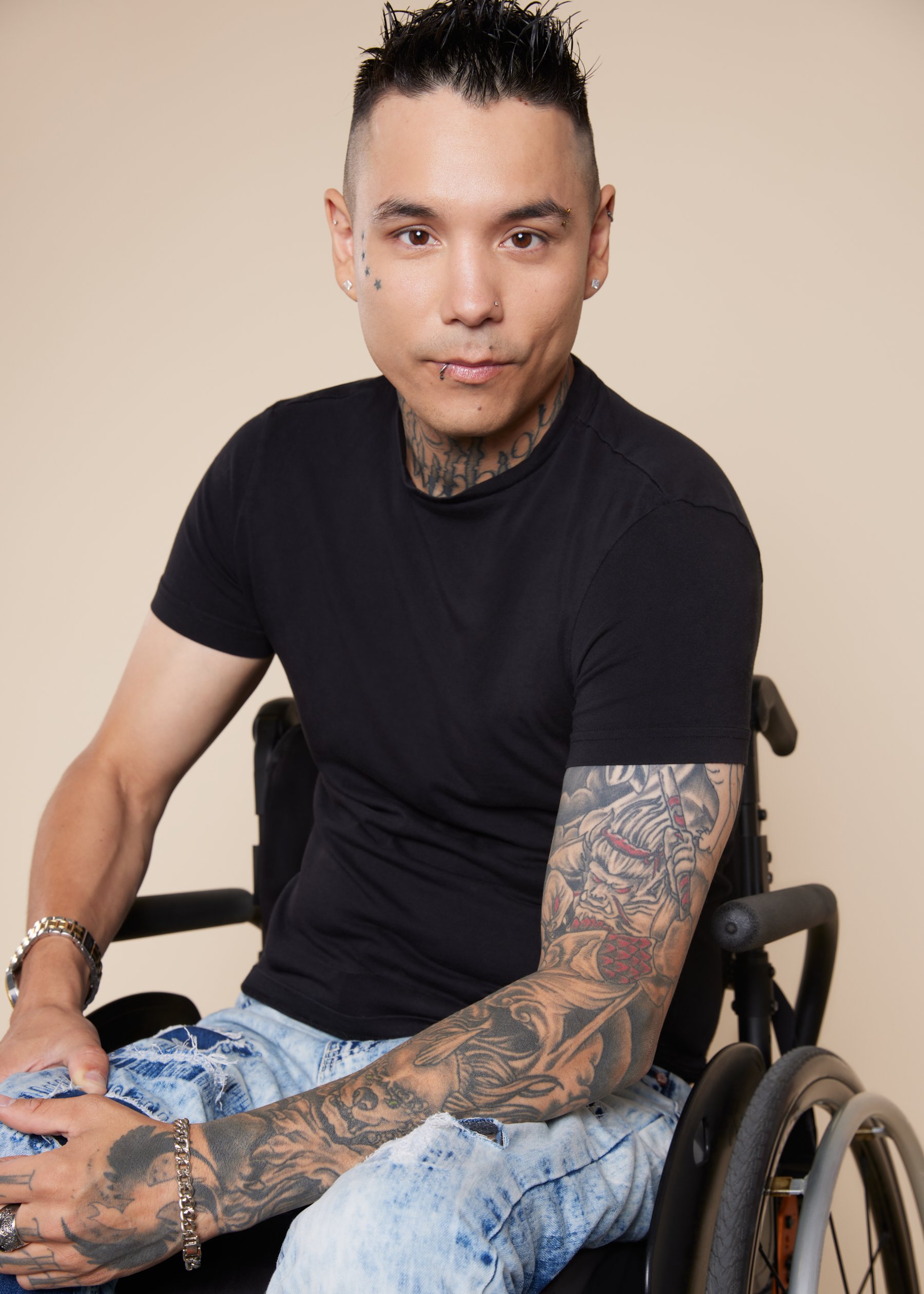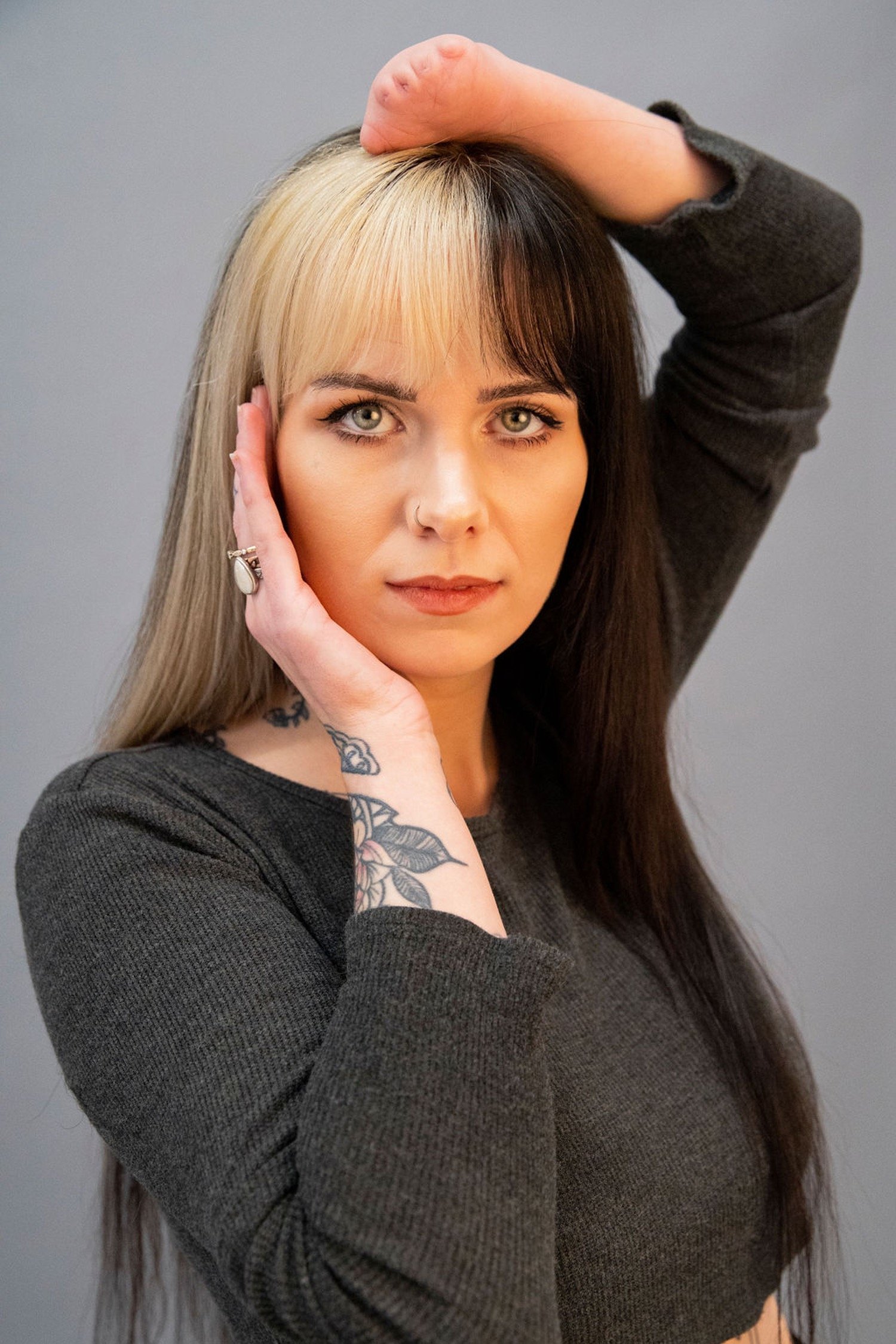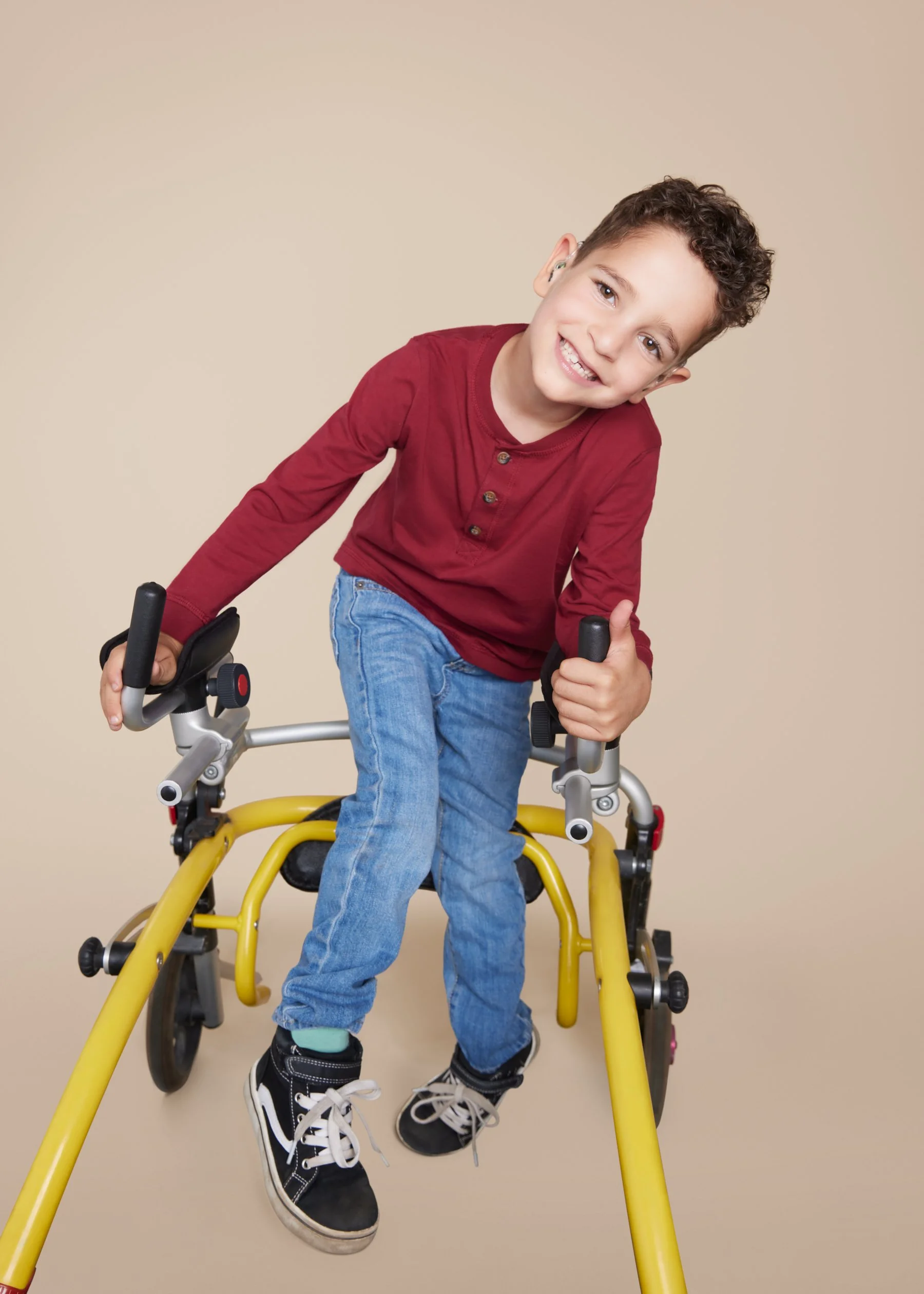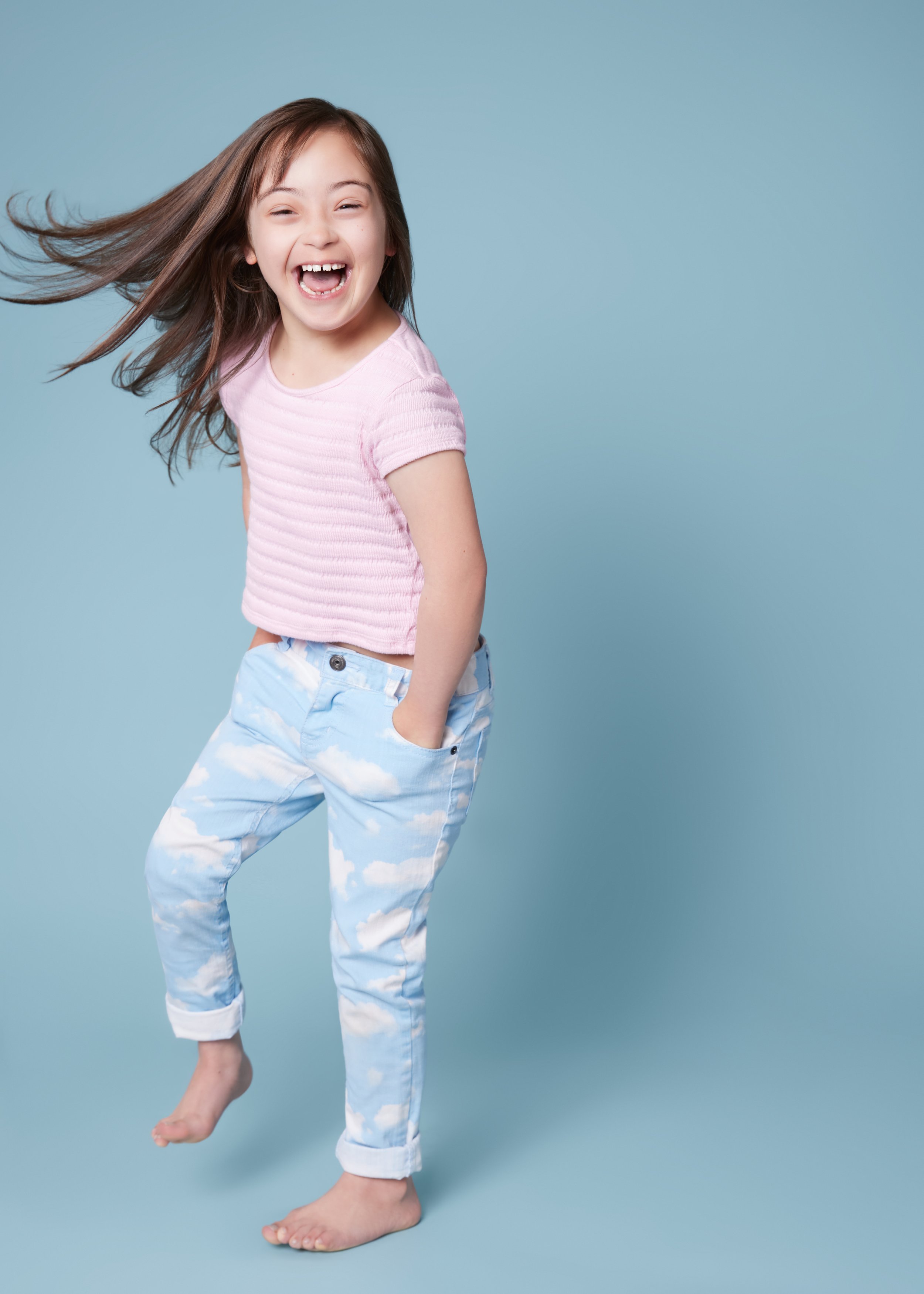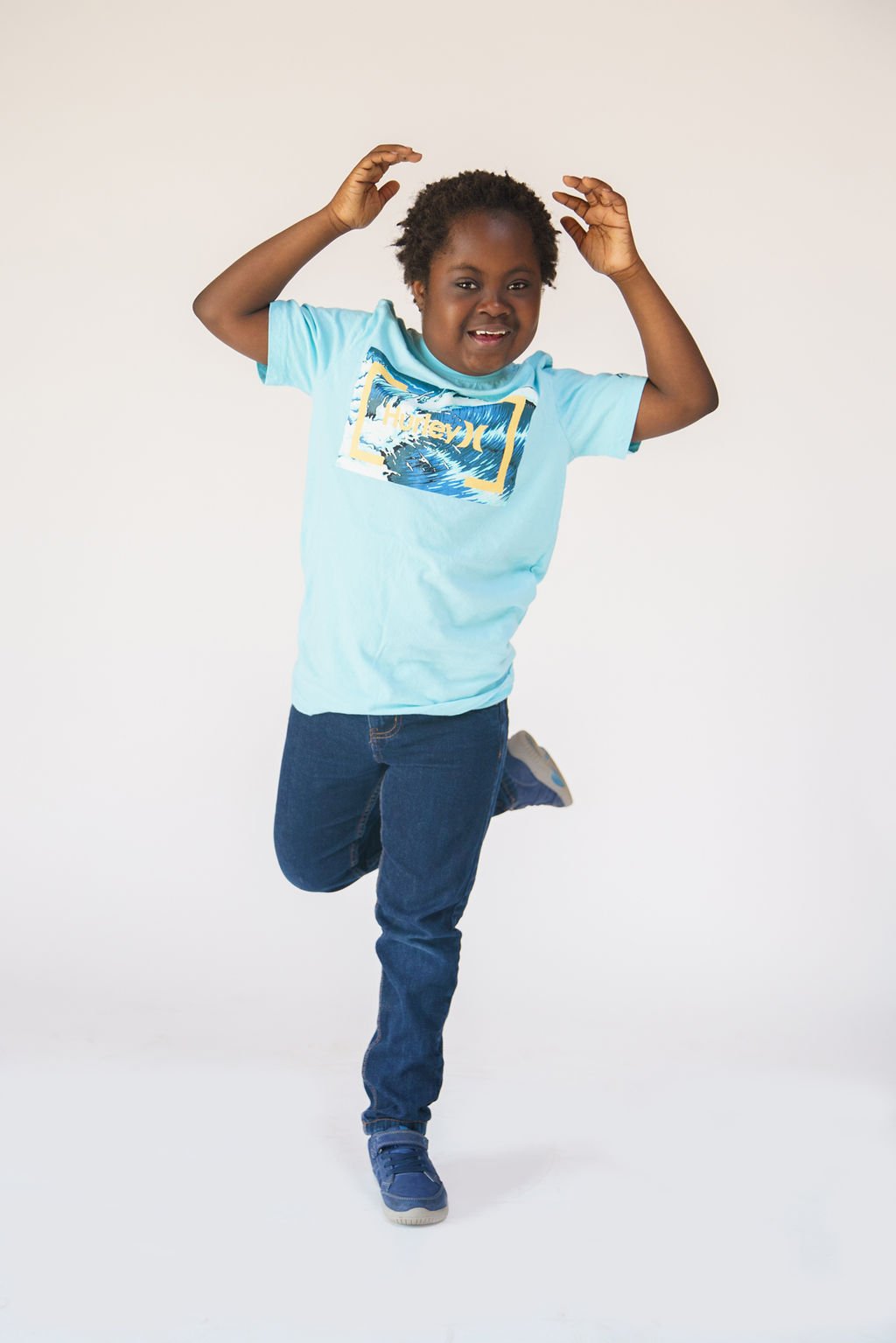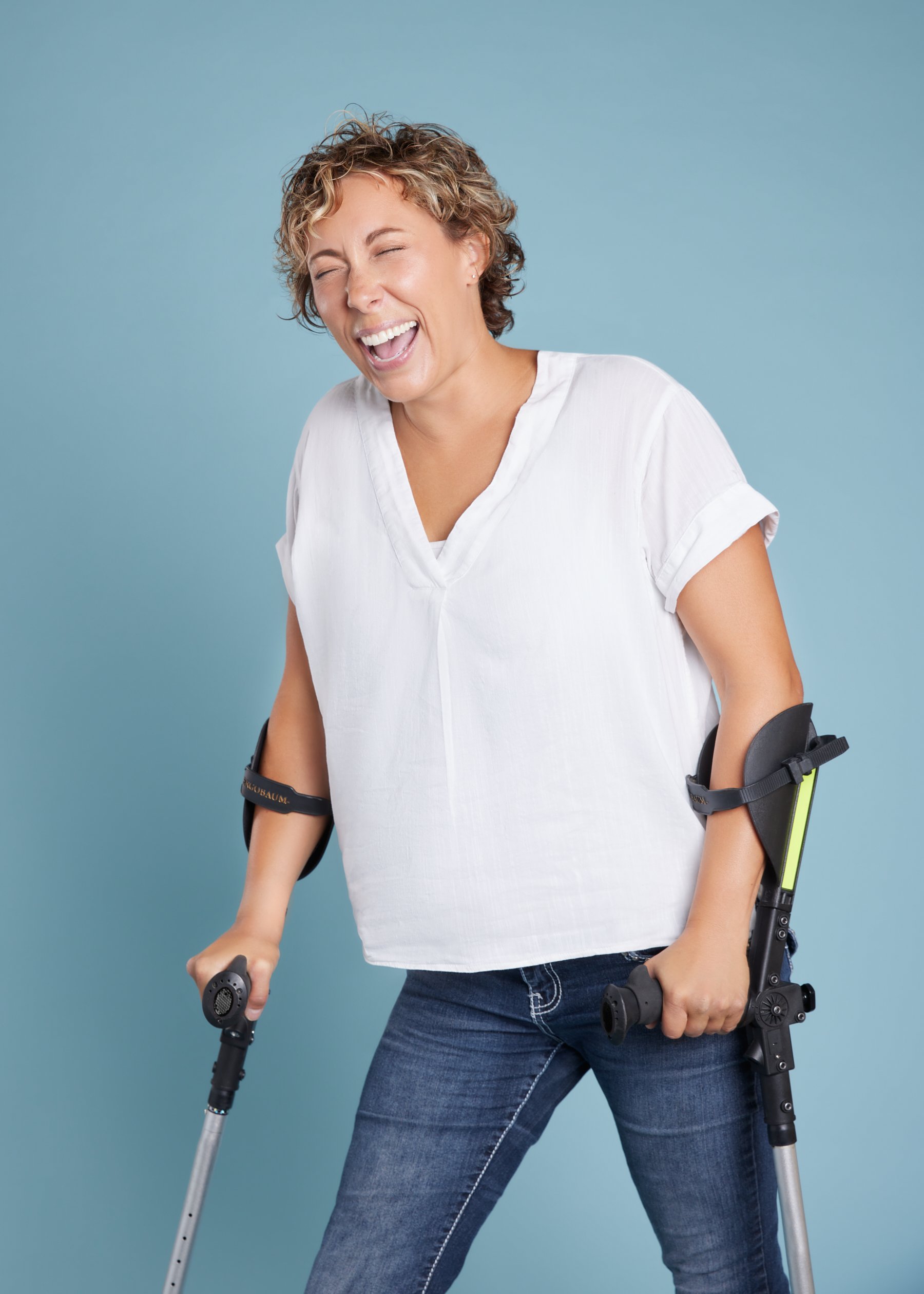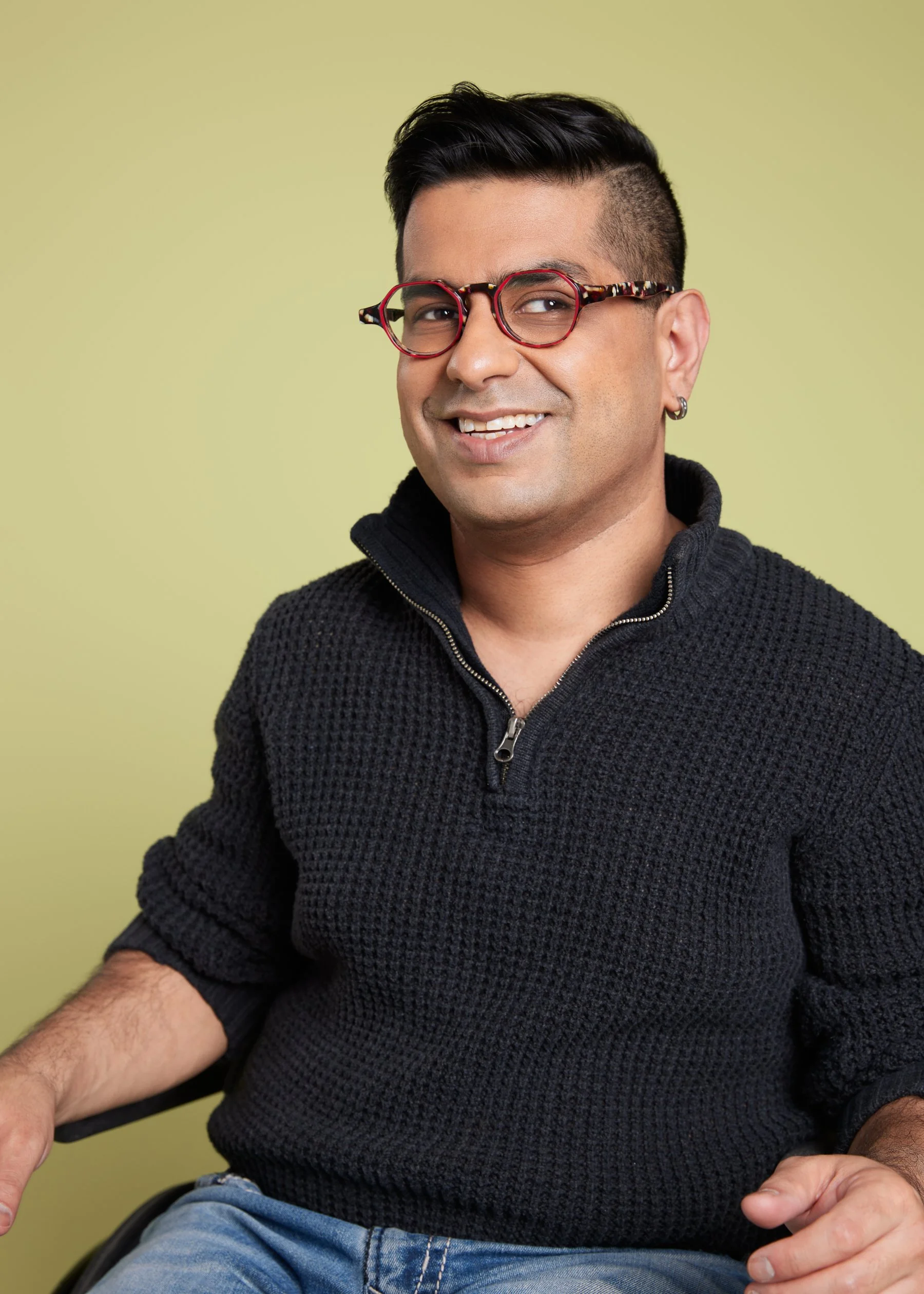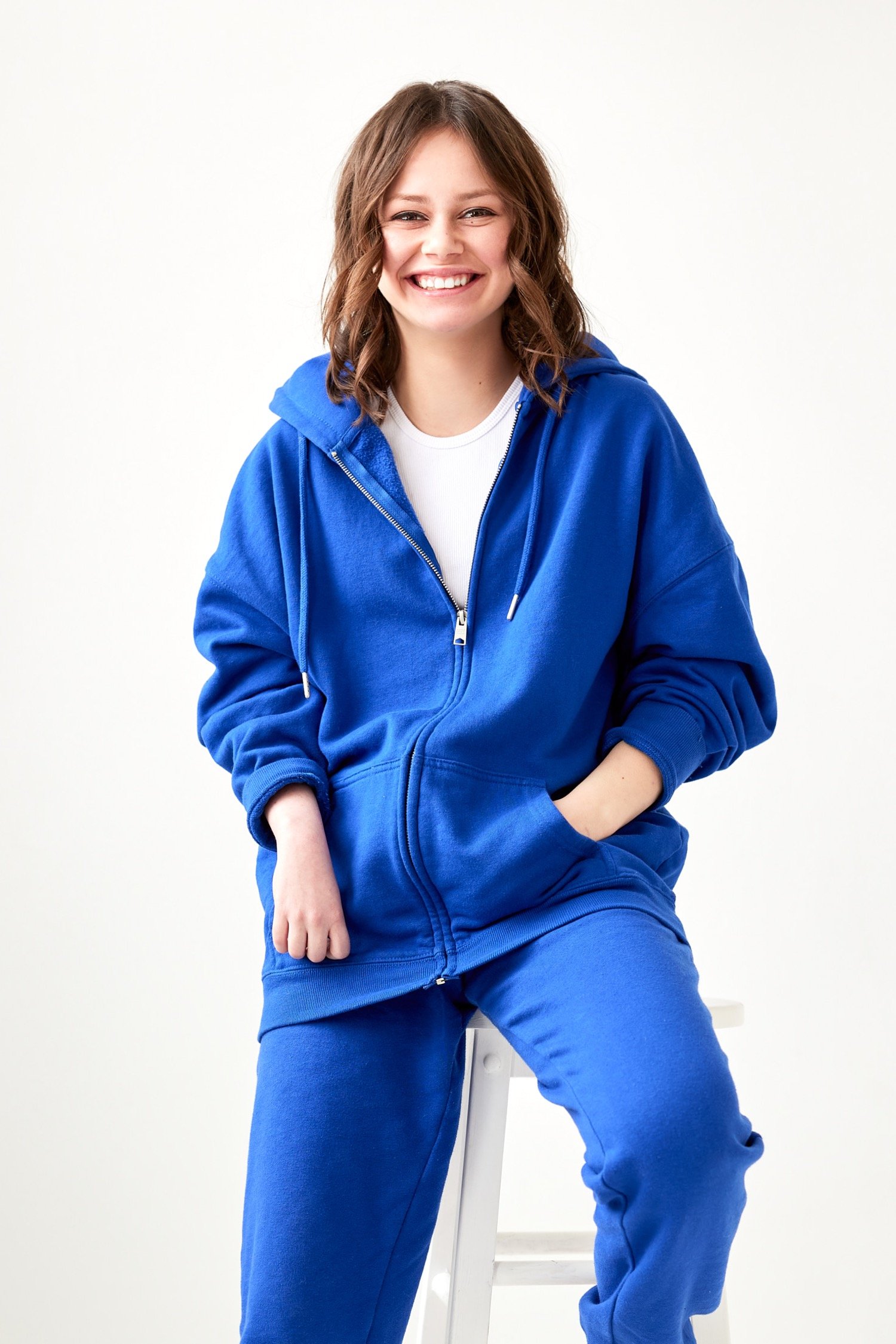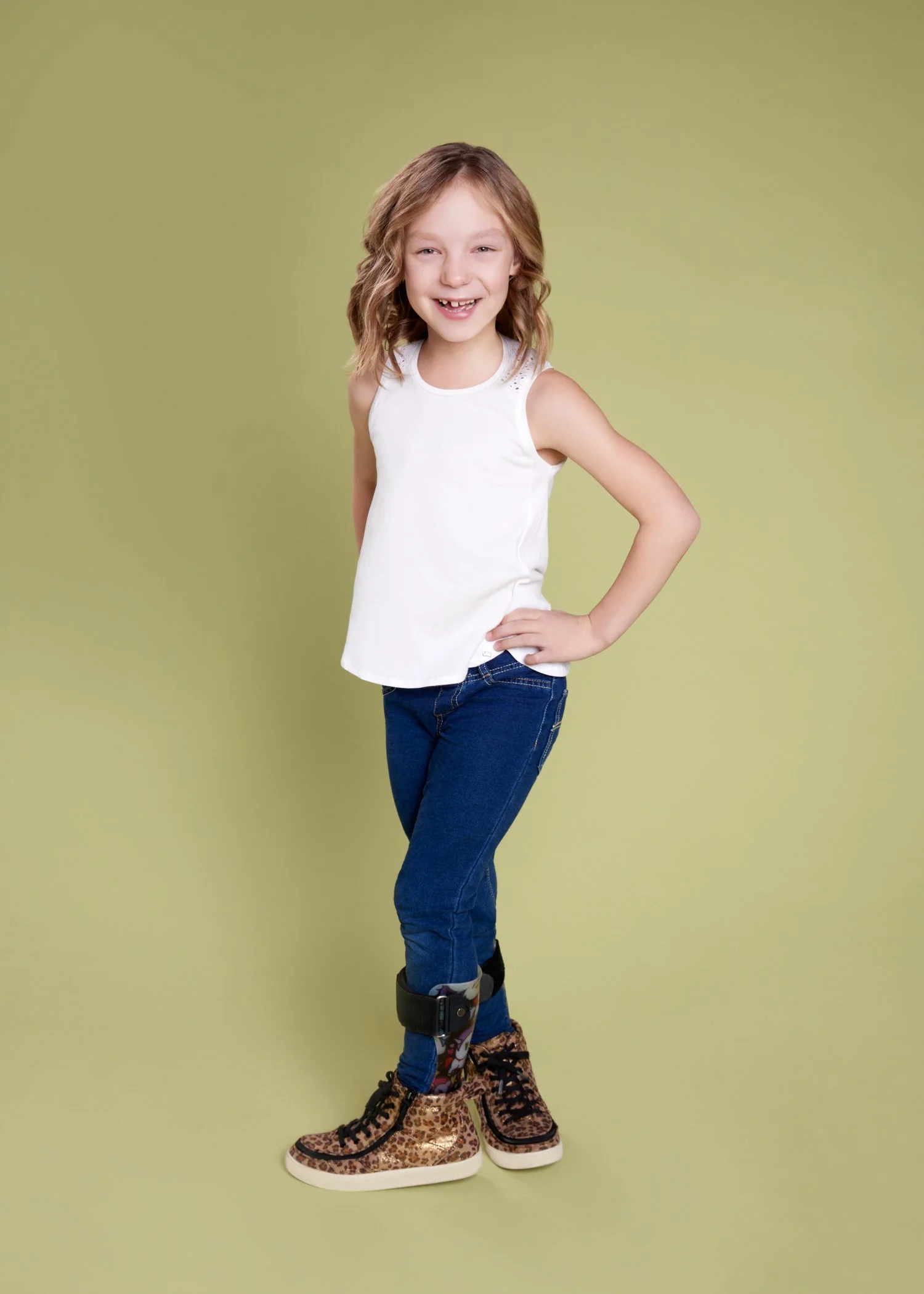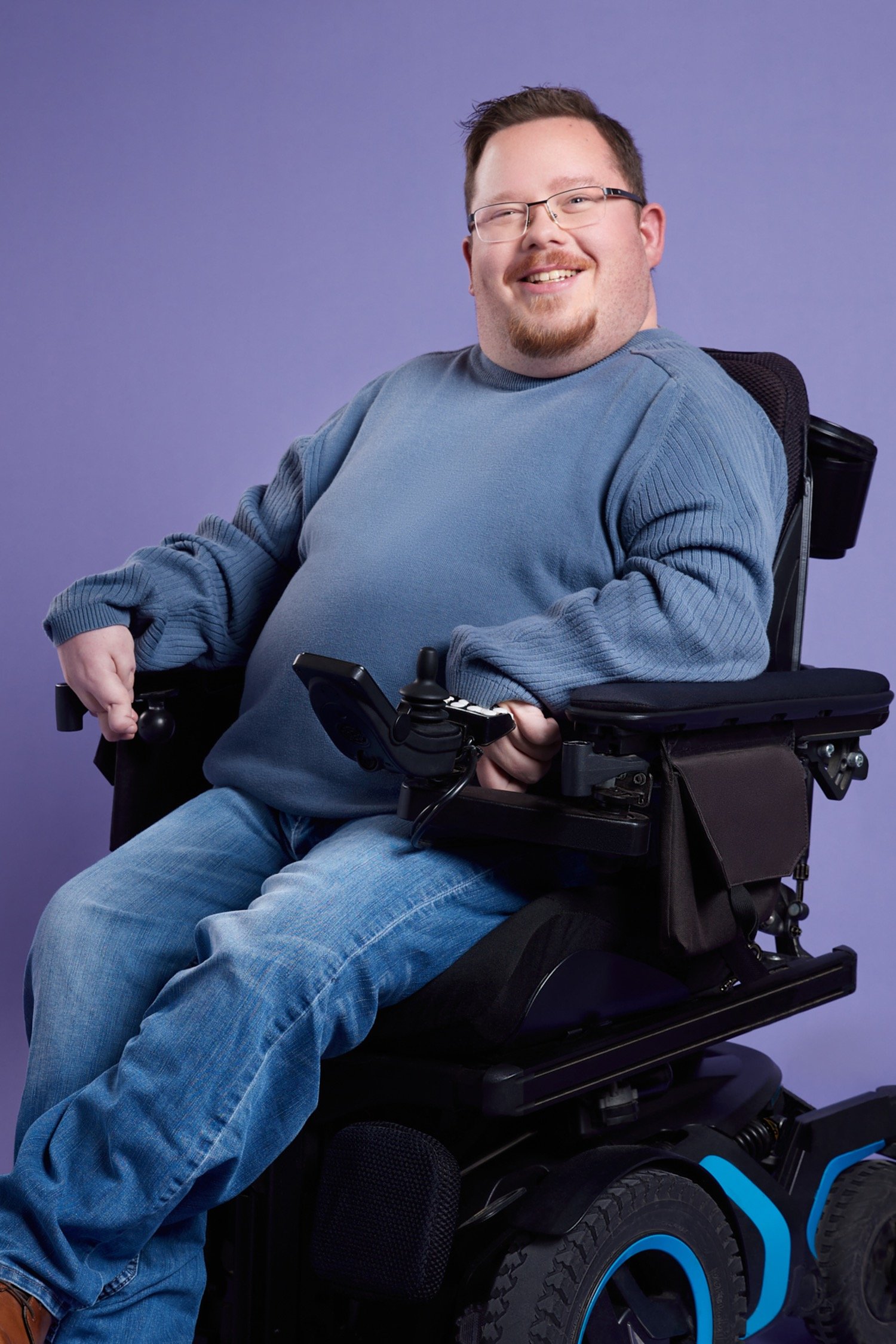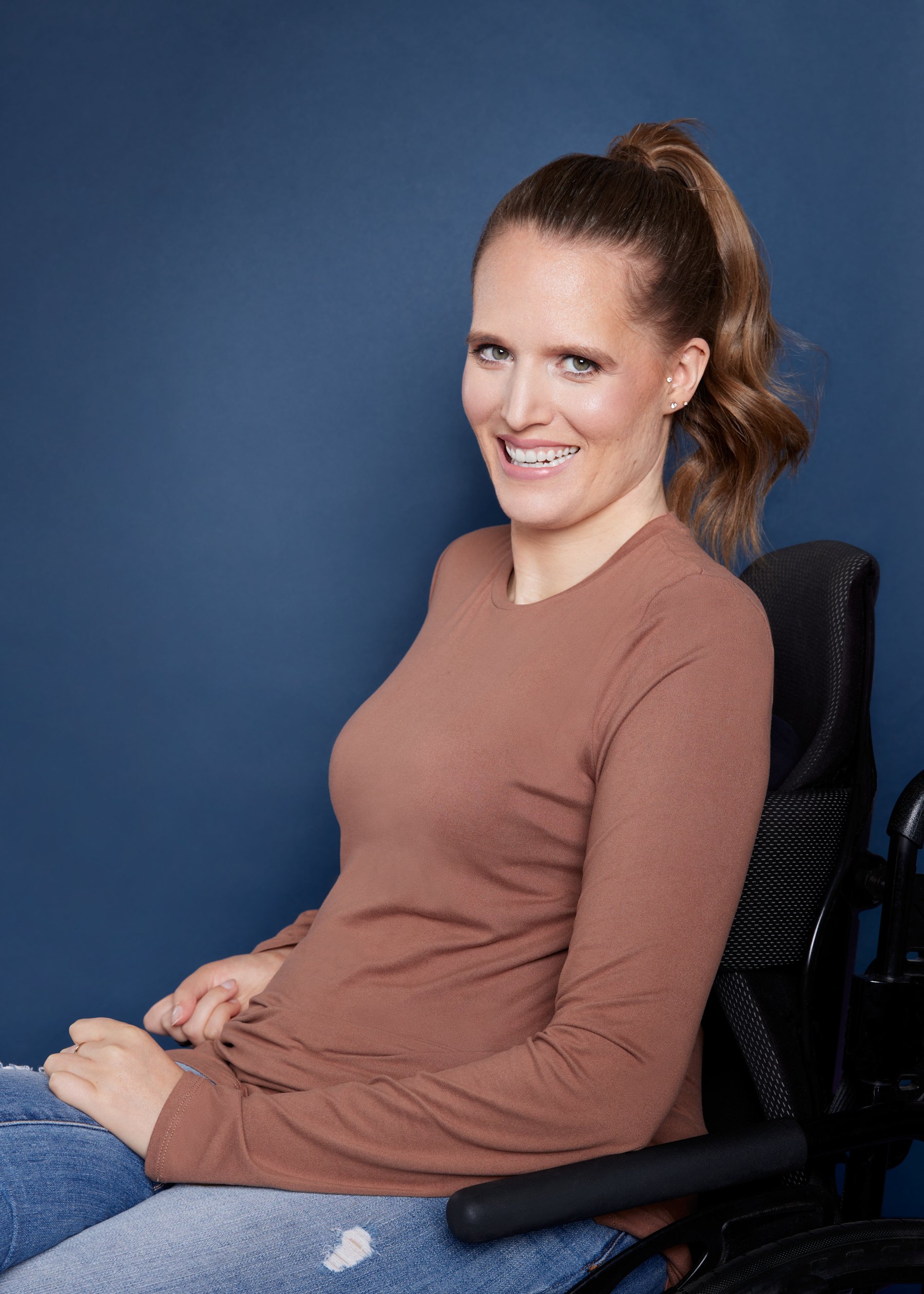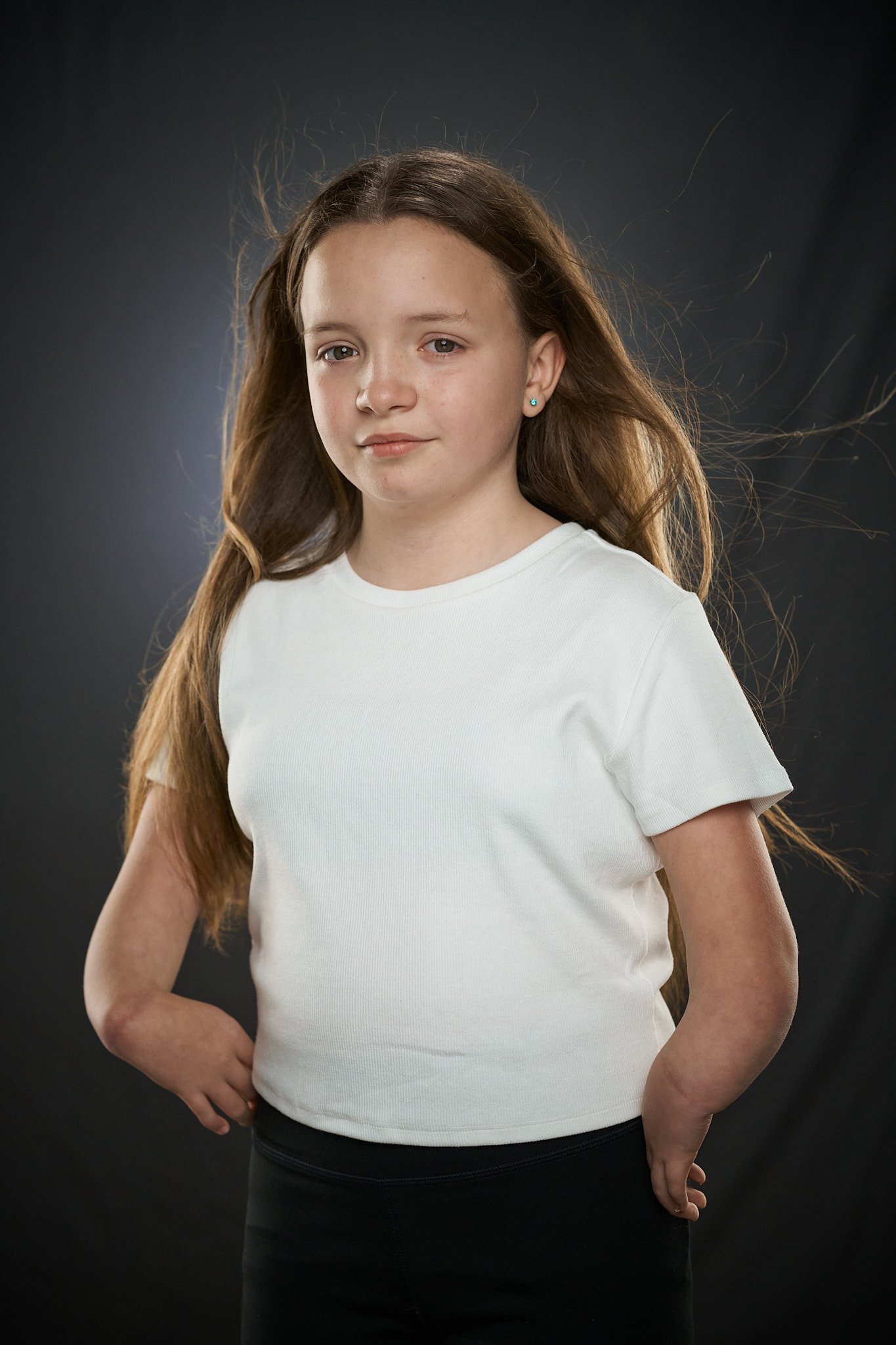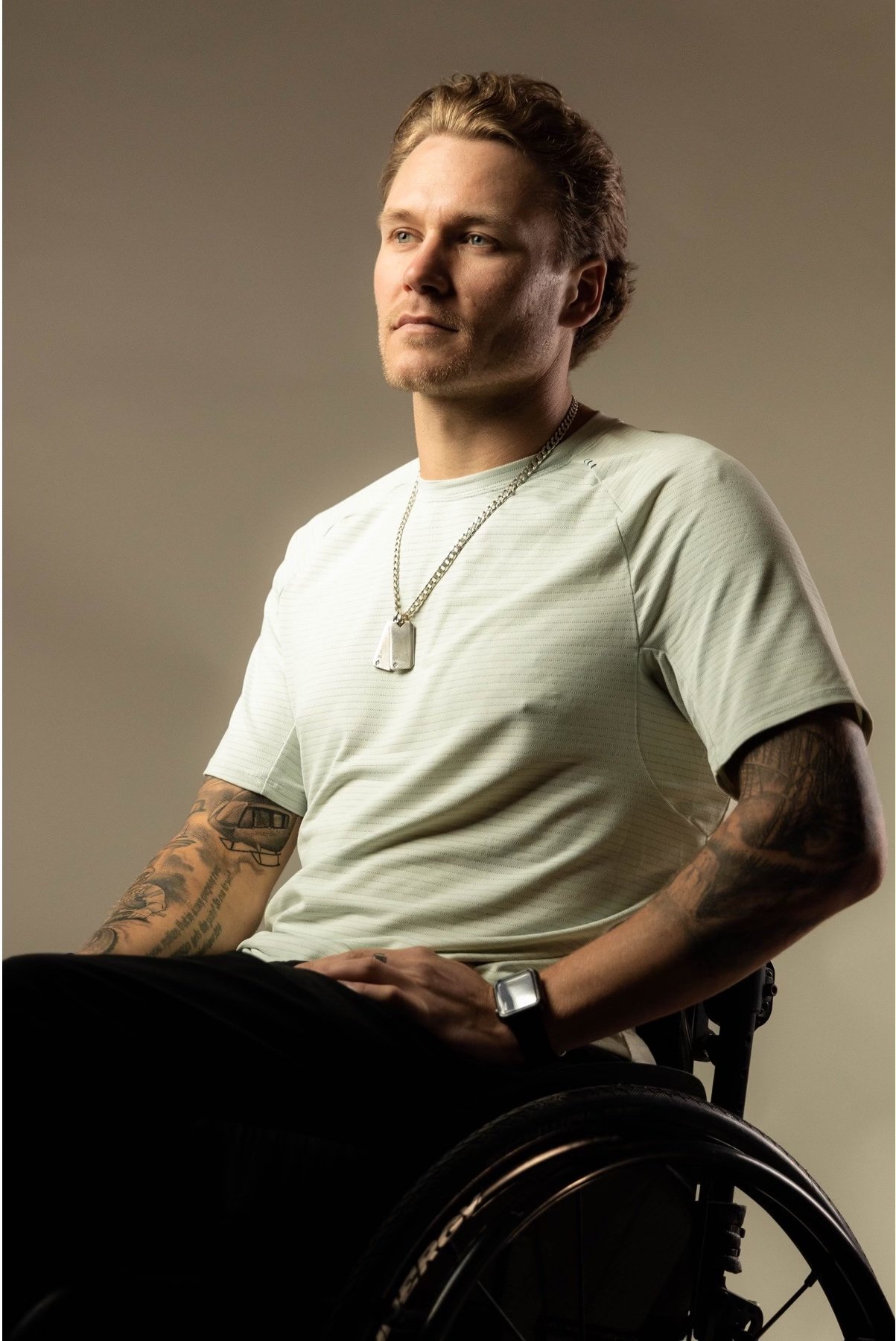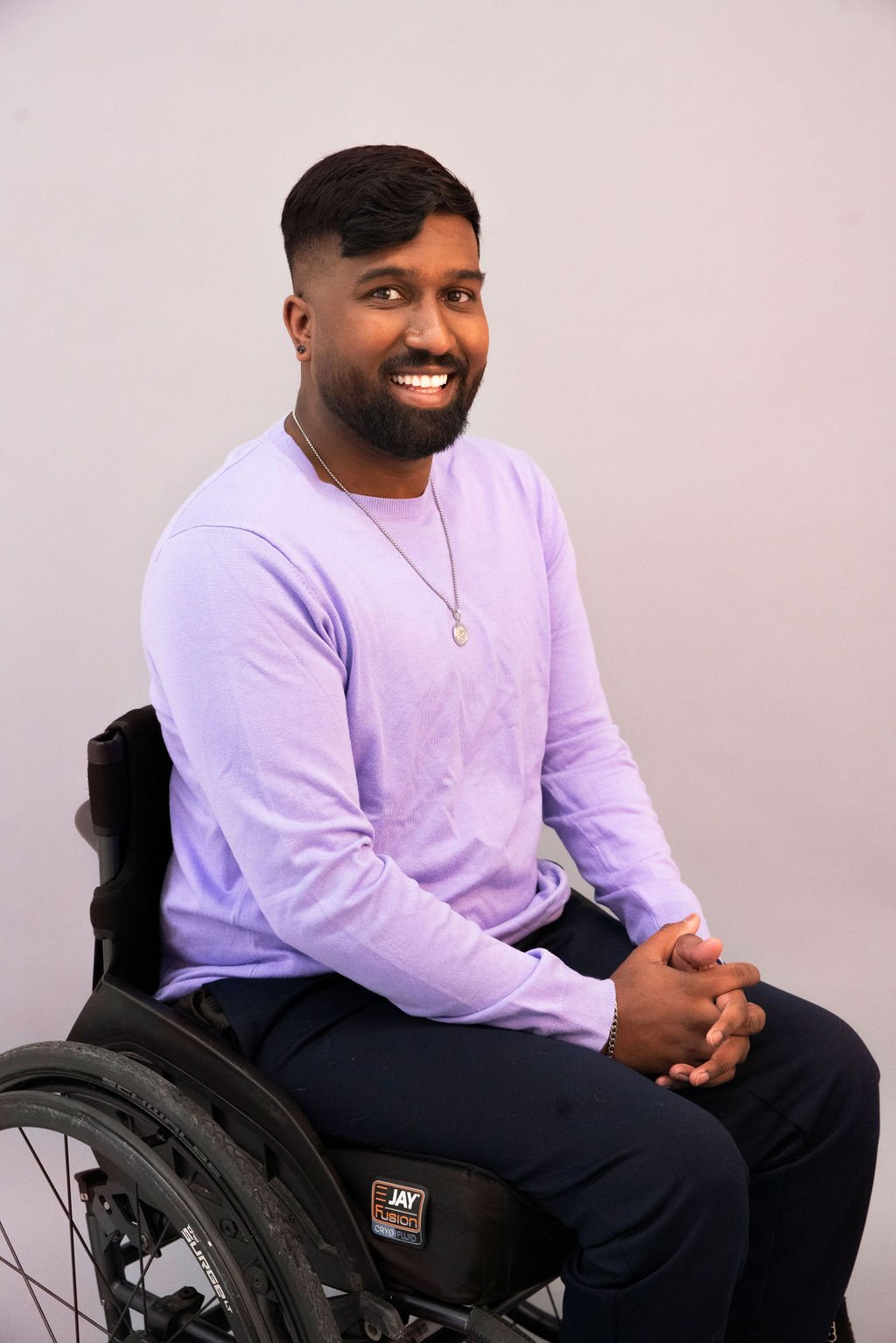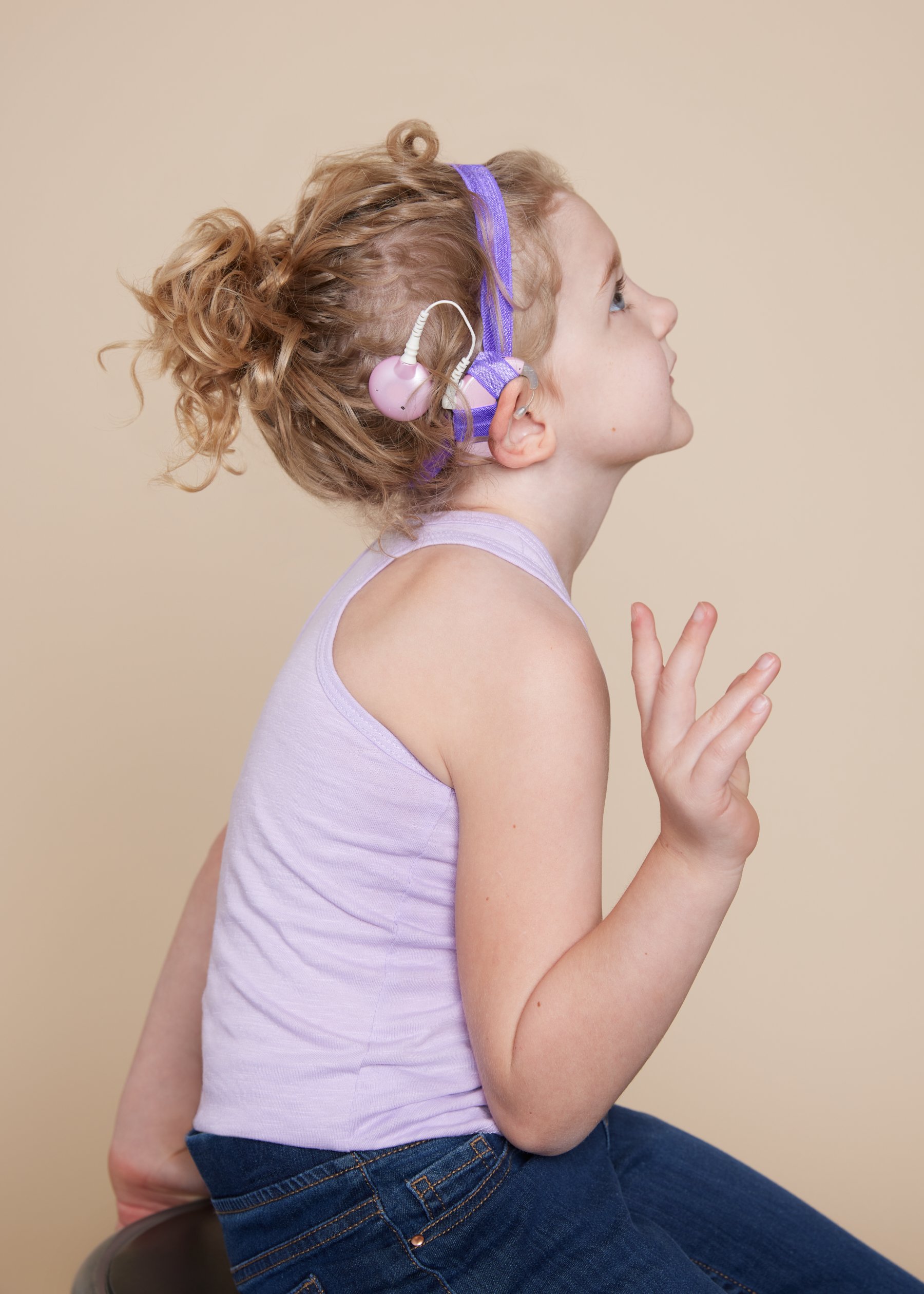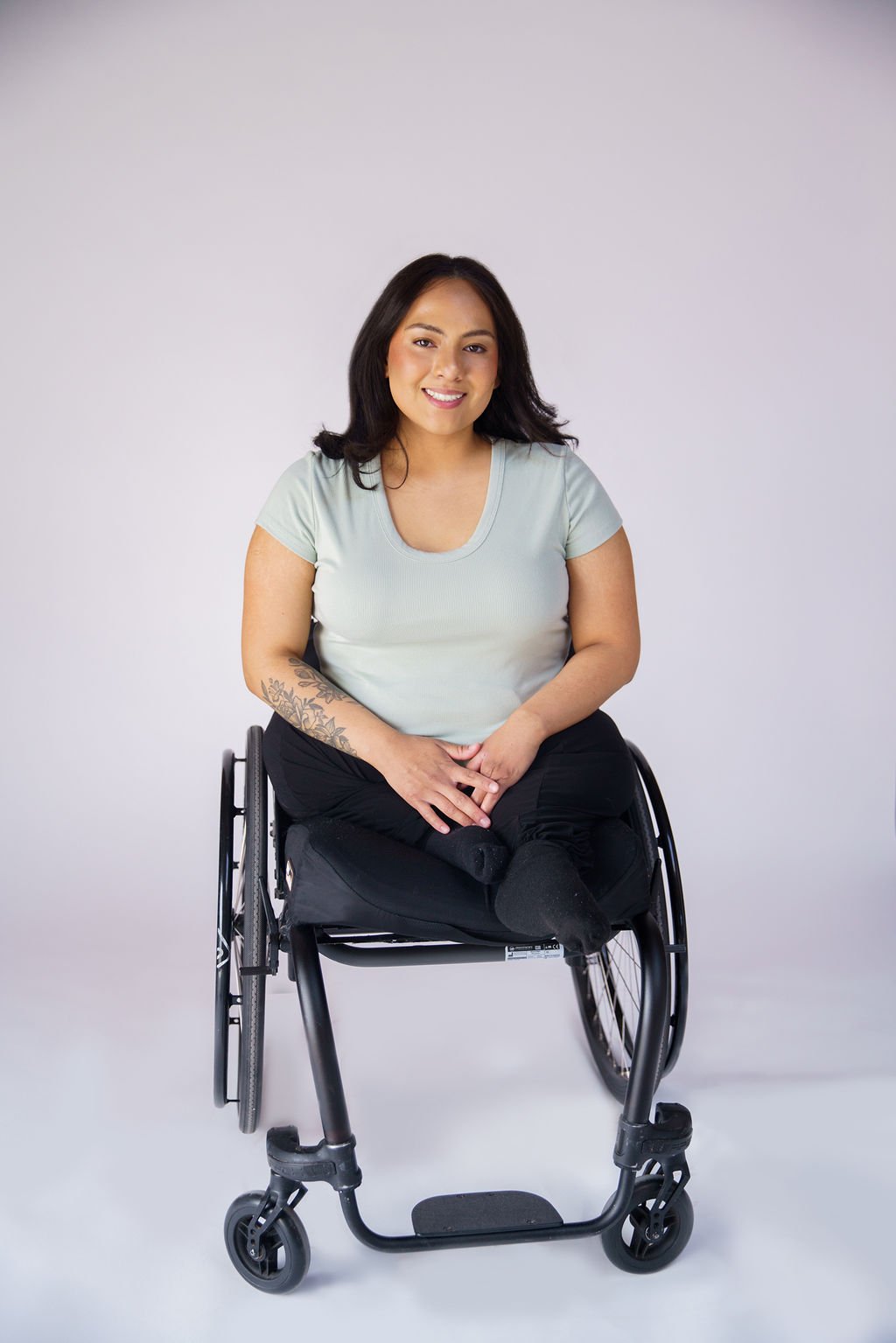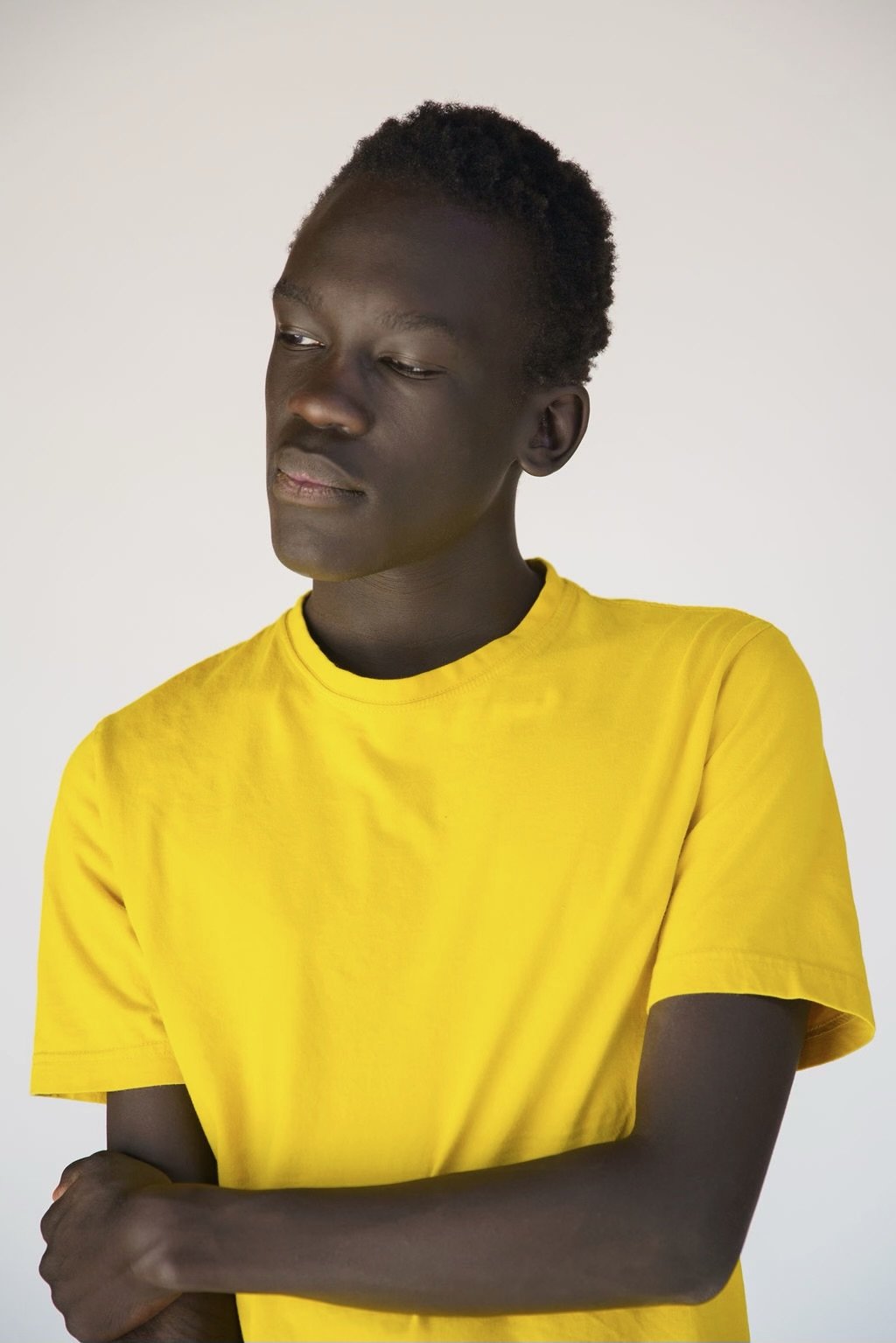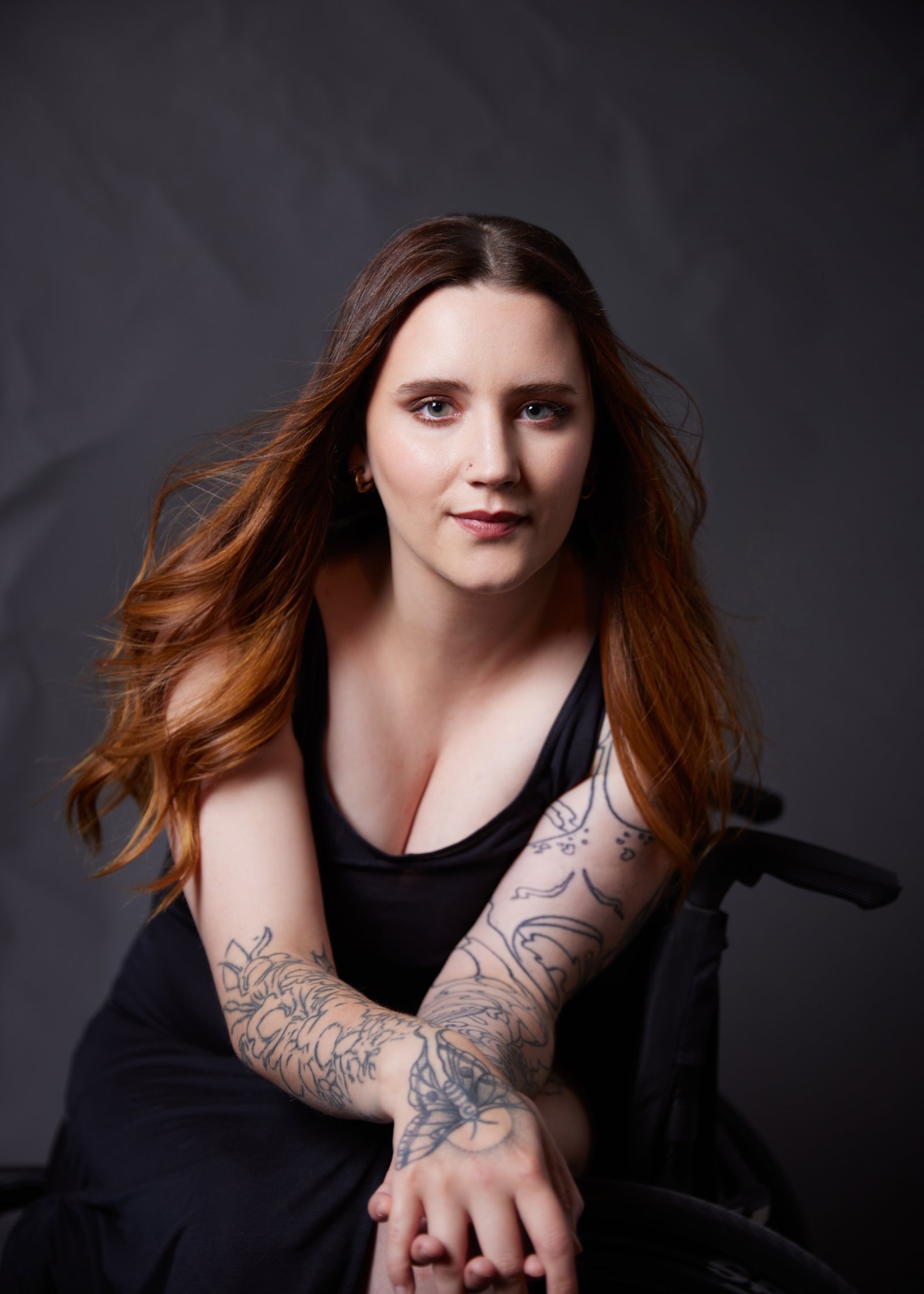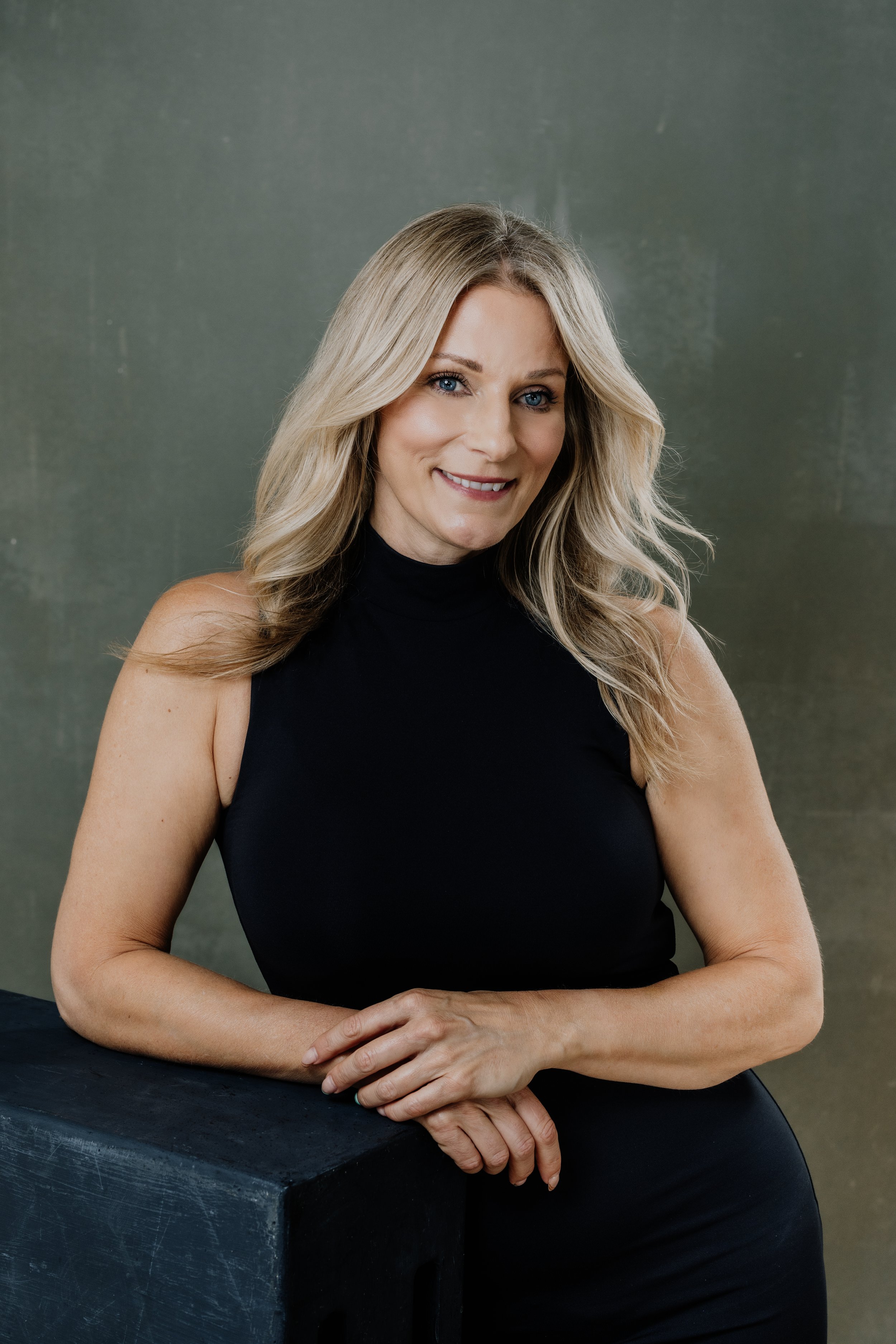Tips for your Portrait or Headshot Session
Image Requirements for Photographers
Studio shoots should have clean lighting that shows off features.
Full-length shots:
If the model uses a mobility aid, please make sure we can see it clearly and that all extra bags/tags are removed.
If the model uses multiple types of mobility aids, please show all, and if they can stand unaided, please also show this.
3/4 length shots showing movement and different poses.
Portrait shots with a variety of serious and smiling (teeth and no teeth).
Clean, minimal retouching.
Aiming for a minimum of 2 backdrops, one being a neutral such as a white or pastel colour.
We're looking for images that show models' personalities that aren't about disability; have fun and try something new. Our talent are amazing, so we want you to have a good time with them and show others how great they are through imagery.
Clothing & Style
When thinking about clothing, keep the word ‘timeless’ in mind; keep it clean and simple.
Aim for fitted, simple clothing that doesn't distract from your face.
Go for 2 looks which would enable you to play 2 roles - one commercial, clean and simple and the other perhaps edgier and more "styled." A commercial look could be jeans and a plain T-shirt, and look 2 could be a jacket or high neck. We suggest not wearing black pants if you're a mobility aid user, as sometimes your black leggings aren't visible on a black wheelchair.
Soft, minimal makeup, preference of none for children or a touch of Vaseline on the lips to add a pop of shine.
Suggest starting with hair down for some shots and then hair up for others. If you have short hair, we suggest aiming for 2 styles if possible.
Think about different ways you can pose. E.g. - standing vs sitting with a variety of positions, rather than just facing straight into the camera with arms down or by your side. Try to be a little creative. We want to change the perception of disability, so try different angles and options.
Tops & Bottoms
Many of the images will feature portraits, making the top the focal point. Consider how a top can complement the face: high necks can create a striking look, t-shirt necklines can create a laid-back look, and textures and frills can create an editorial look.
Opt for fabrics like denim, knits, cotton shirts, and/or anything with a texture for the light to fall on.
Pay attention to your fit. Although loose-fitting clothing may be fashionable, a loose top can swamp the frame.
Avoid patterns like dots and stripes, as well as logos, text, and red hues.
Simple jeans, leggings, pants, or shorts will mean the focus will stay on the face; bring one dark pair and one light pair if you have them. Skirts are pretty but don’t work well for seated shots.
If changing is difficult for you or your child, arriving in black leggings or denim jeans that complement your chosen tops is a practical alternative.
Other Considerations
Hair: Please ensure that your hair, or your child's hair, is clean and brushed.
For individuals with longer hair, please start with your hair down and bring any necessary hair supplies to change to an updo if desired.
For individuals with shorter hair, please arrive with your hair styled as you normally wear it and avoid getting a haircut the day before.
Make-up: Should be kept minimal and delicate, or none at all.
Footwear: Choose a shoe that is simple and of a single colour: black, gray, white, cream, beige, or brown.
Nails: Remove any nail polish before the shoot and ensure that nails are clean and tidy.
Adaptive Equipment: Please bring any adaptive equipment that you use, such as mobility aids, prosthetics, hearing aids, glasses, and other necessary items.
When showcasing disability, it's important to include everything!

